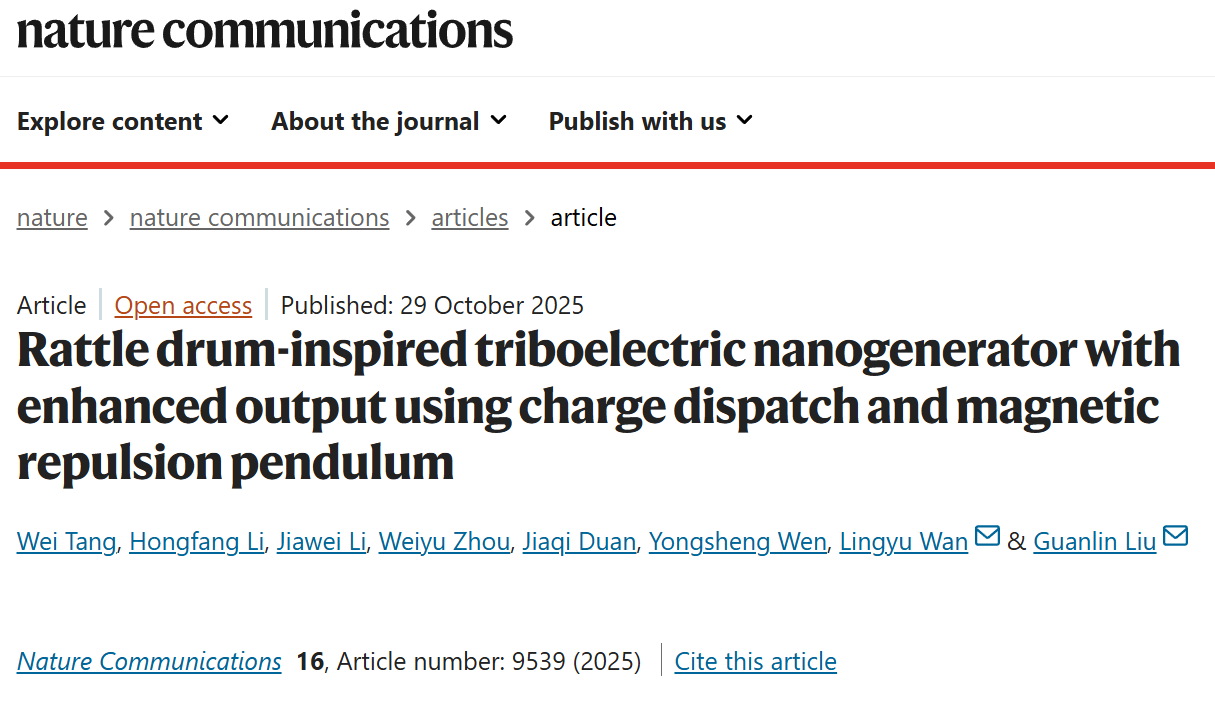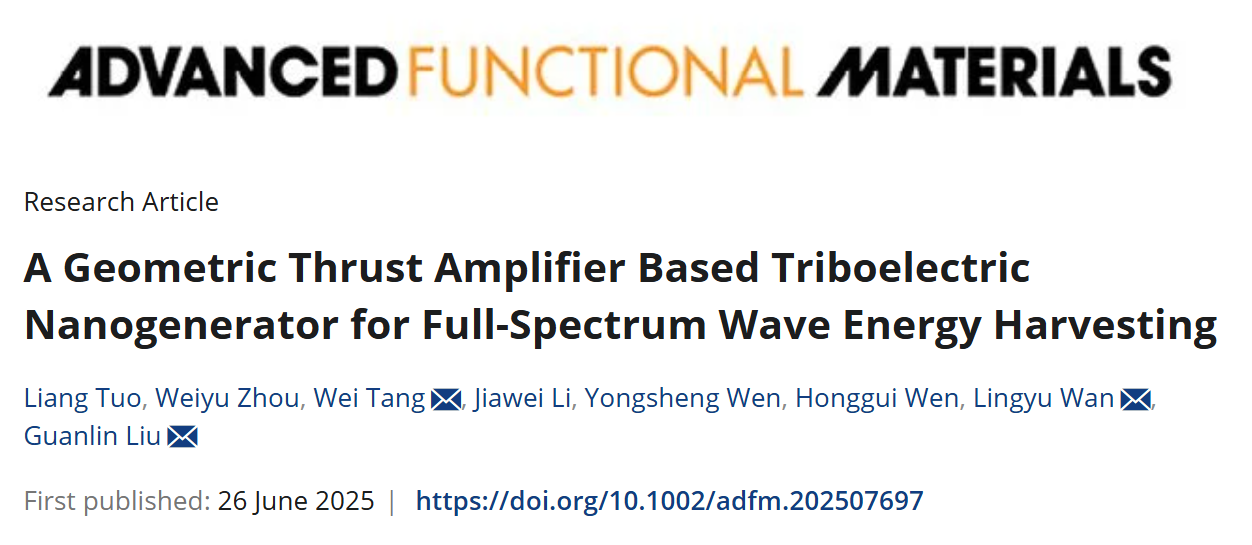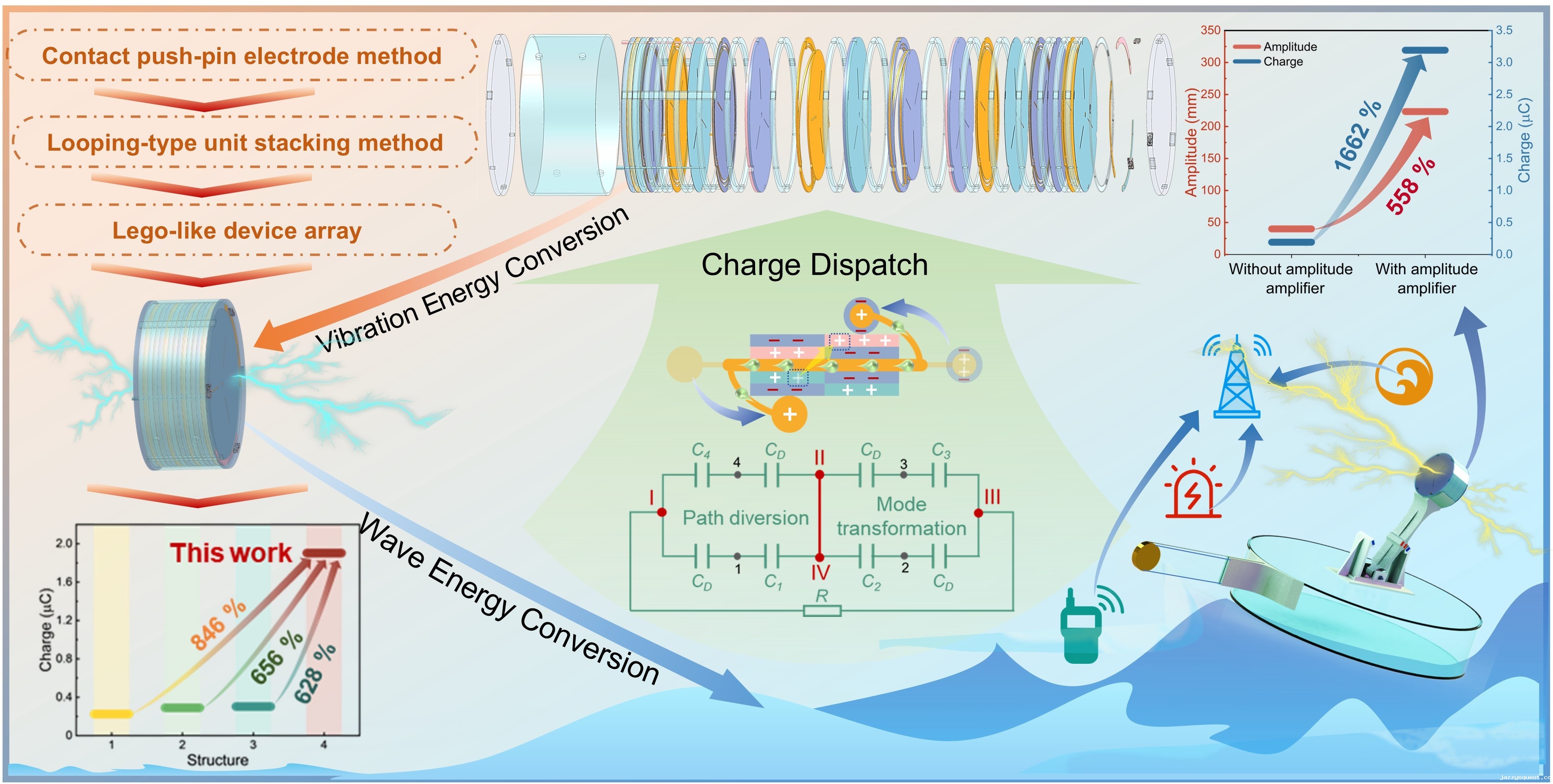Recently, the Blue Energy team from the School of Physical Science and Technology has advanced in efficiently harvesting low-frequency ocean wave energy using TENGs. The findings were published in Nature Communications under the title "Rattle drum-inspired triboelectric nanogenerator with enhanced output using charge dispatch and magnetic repulsion pendulum," with Tang Wei, a 2025 doctoral student in Physics, as the lead author, and Associate Prof. Dr. Liu Guanlin and Prof. Dr. Wan Lingyu as corresponding authors. Another study was published in Advanced Functional Materials as "A geometric thrust amplifier based triboelectric nanogenerator for full-spectrum wave energy harvesting," with Tuo Liang, a master’s student, as the lead author, and Tang Wei, Prof. Dr. Wan Lingyu, and Associate Prof. Dr. Liu Guanlin as corresponding authors. Guangxi University is the sole corresponding institution for both papers.


To address the low efficiency of traditional low-frequency wave energy harvesting, the team developed a rattle drum-inspired TENG. By employing a three-electrode configuration and an alternating coating strategy, charge dispatch between densely packed friction layers was achieved, increasing the external electrode output by over sixfold. Incorporating a frequency-reducing and amplitude-enhancing magnetic repulsion pendulum effectively converted low-amplitude, high-torque wave excitations into high-amplitude, low-torque oscillations, boosting motion amplitude and output performance by 558% and 1,662%, respectively, enabling stable power generation under low sea states. The team established a comprehensive evaluation framework covering structural, electrical, and application-oriented metrics, providing critical insights for efficient wave energy TENGs in complex sea conditions and industrial applications.

To tackle low energy utilization in passive floating systems and insufficient excitation in integrated TENGs, the team created a thrust-amplified TENG. Utilizing a tension-rope topology and dual-end anchored geometric constraints, it achieves a 3.8-fold tension amplification from minor wave thrust, overcoming the common issue of inadequate separation in dense friction layers under weak excitation. The design introduces a silicon-manganese steel sheet integrating four functions—structural support, elastic component, positive friction layer, and conductive electrode—featuring a frameless quadruple-spiral interlocking layered structure that enables high spatial density integration with a mass-to-surface area ratio of 1.7 cm²/g. Additionally, a modular six-unit self-assembling array was proposed, offering a scalable deployment solution from multi-unit integration to macro-arrays for in-situ power systems in marine Internet of Things.

This research was supported by the National Key R&D Program, the National Natural Science Foundation, and the "Unveiling and Commanding" project of the Institute of Science and Technology for Carbon Peak & Neutrality of Guangxi University. Established in April 2023, the Institute leverages multidisciplinary strengths, integrating civil engineering, physics, chemical engineering, forestry, agronomy, and business administration. It focuses on low-carbon design and digital construction of long-span arch bridges, low-carbon building materials and green construction, green chemical engineering and carbon conversion technologies, blue energy and carbon replacement strategies, and sugarcane and plantation forests, conducting cutting-edge research and key technological development to support national and Guangxi’s dual carbon goals.